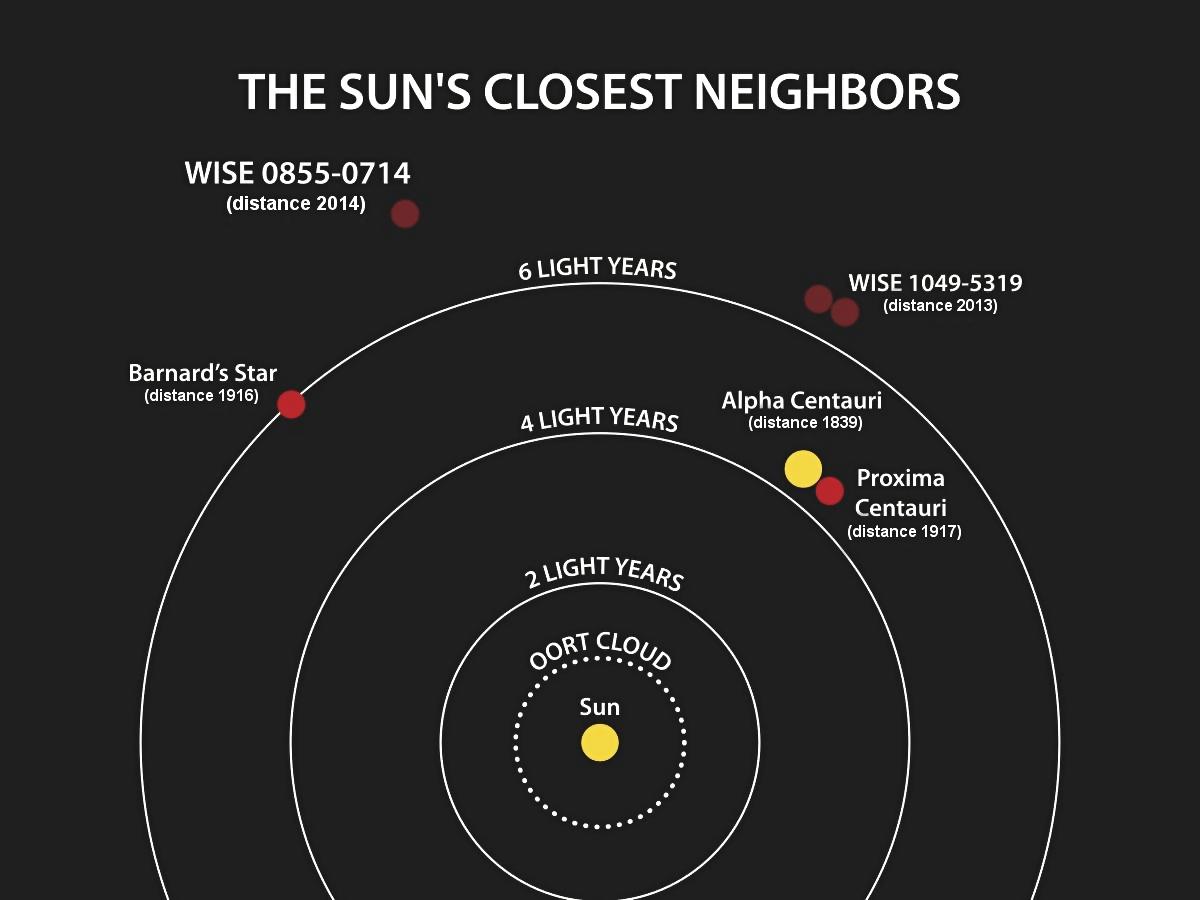- Mon 01 January 2001
- Planetary Stuff
- Wikipedia
- #stars, #planets, #g-type
Alpha Centauri (α Centauri, abbreviated Alpha Cen, α Cen) is the closest star system to the Solar System at a distance of 4.37 light-years (1.34 pc). It consists of three stars: the pair Alpha Centauri A (also named Rigil Kentaurus) and Alpha Centauri B together with a small and faint red dwarf, Alpha Centauri C (also named Proxima Centauri), that may be gravitationally bound to the other two. To the unaided eye, the two main components appear as a single point of light with an apparent visual magnitude of −0.27, forming the brightest star in the southern constellation of Centaurus and the third-brightest star in the night sky, outshone only by Sirius and Canopus.

Alpha Centauri A (α Cen A) has 110 percent of the mass and 151.9 percent of the luminosity of the Sun, and Alpha Centauri B (α Cen B) is smaller and cooler, at 90.7 percent of the Sun's mass and 44.5 percent of its visual luminosity. During the pair's 79.91-year orbit about a common centre, the distance between them varies from about that between Pluto and the Sun to that between Saturn and the Sun.
Proxima Centauri (α Cen C) is at the slightly smaller distance of 1.29 parsecs or 4.24 light years from the Sun, making it the closest star to the Sun, even though it is not visible to the naked eye. The separation of Proxima from Alpha Centauri AB is about 0.06 parsecs, 0.2 light years or 15,000 astronomical units (AU), equivalent to 500 times the size of Neptune's orbit. Proxima b, an Earth-sized exoplanet in the habitable zone of Proxima Centauri, has been detected and may be a destination of future interstellar spacecraft, including a fleet of StarChip spacecraft currently being developed for a flyby mission by the Breakthrough Starshot project.
